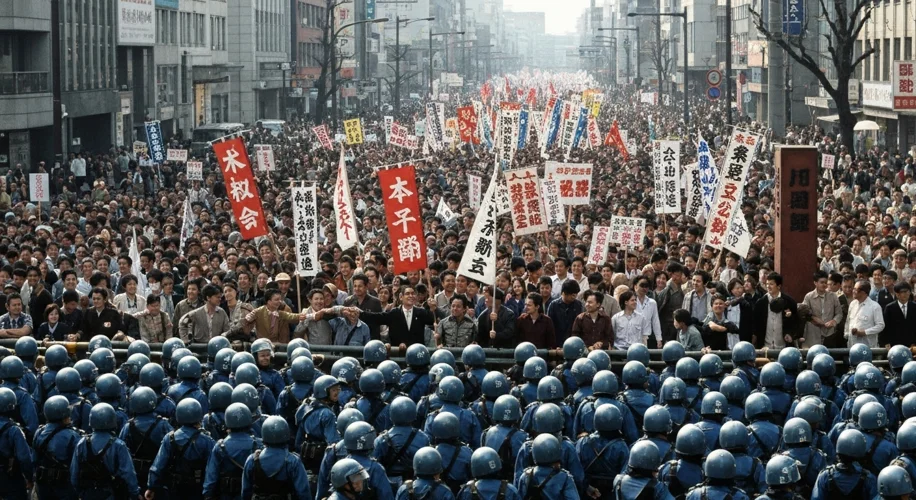The summer of 1960 in Japan was a crucible of dissent, a time when the streets of Tokyo, and indeed much of the nation, became a battleground of ideals. At its heart was the U.S.-Japan Security Treaty, a pact that had underpinned the post-war American occupation and guaranteed Japan’s security in a Cold War world. But for a growing segment of the Japanese populace, this treaty had become a symbol of subjugation, a relic of a bygone era that stifled their newfound sovereignty and perpetuated a dangerous dependence.
The roots of this discontent ran deep into the fertile ground of postwar Japan. The nation, utterly devastated by World War II, had been rebuilt under American guidance. The Security Treaty, originally signed in 1951, was intended to be a temporary measure, allowing Japan to rearm while relying on the U.S. for defense. However, in 1960, Prime Minister Nobusuke Kishi sought to revise and renew the treaty, arguing it would place Japan on a more equal footing with its powerful ally. This revision, however, was perceived by many as an entrenchment of the unequal relationship, solidifying American military bases and asserting U.S. influence in Japanese affairs.
The cultural backdrop was one of burgeoning national identity clashing with the lingering trauma of war and the pervasive presence of American power. Students, intellectuals, labor unions, and ordinary citizens, many of whom had experienced the horrors of war firsthand, saw the revised treaty as a betrayal of Japan’s pacifist constitution and a dangerous step back towards militarism. They yearned for true independence, for a Japan that charted its own course on the global stage, free from the dictates of a foreign power.
At the forefront of this seismic eruption were figures like Sanzo Nosaka, a prominent communist leader, and various student organizations, most notably the Zengakuren. These groups mobilized an unprecedented wave of protest, characterized by their sheer scale and fervor. For months, hundreds of thousands, sometimes millions, of people took to the streets. Their chants echoed through the urban landscape, a powerful chorus of defiance against the perceived injustice of the treaty. The demonstrations were not merely political rallies; they were visceral expressions of a nation grappling with its identity and its future.

The climax of these protests arrived on June 15, 1960, when a student, Michiko Kanba, was trampled to death during a confrontation with police. Her death sent shockwaves through the nation, galvanizing the protesters and hardening their resolve. Yet, paradoxically, it also sowed seeds of division and fear among some segments of the population and within the political establishment. The government, under immense pressure, even had to postpone President Dwight D. Eisenhower’s planned visit to Japan. Despite the overwhelming public outcry and the palpable tension, Kishi’s government, with the support of the conservative Liberal Democratic Party, pushed the treaty through the Diet, ratifying it on May 20th.
The failure of the Anpo protests to derail the treaty marked a critical turning point for the Japanese left. While the movement had achieved remarkable visibility and demonstrated the power of popular mobilization, its ultimate inability to achieve its primary objective led to introspection and, eventually, fragmentation. The unified front that had characterized the protests began to crumble under the weight of ideological disputes and strategic disagreements. Some factions grew more radical, pushing for revolutionary change, while others sought more moderate approaches. The defeat also coincided with a period of economic prosperity in Japan, the so-called

